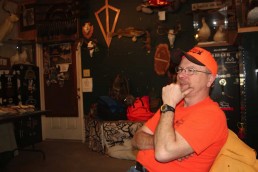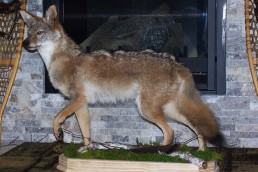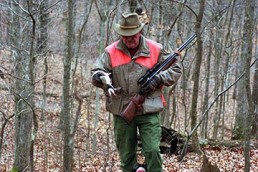Taxidermy: The Art of Preservation
SHARE THIS POST
Wildlife. As a hunter, the word might trigger thoughts of sitting in your deer stand on a brisk November morning or taking a warm sip of coffee as the sound of mallard wings sing to you from your hide in the weeds. Al Bartz, a taxidermist in southeast Minnesota, spends his days creating lasting works of art that pay tribute to memorable days in the field.
Entering the cabin-like atmosphere of Bartz’ shop, animals are everywhere, mounted in lifelike poses. From elk to bass and every animal in between, Scenic Taxidermy has quickly become one of my favorite places to visit and bring my harvests. Since the day I met Al, I have been intrigued by his ability to re-create my memories of special hunts through his gift for taxidermy art.
Take a look in the dictionary and you will find the definition of taxidermy is the art of preparing, stuffing, and mounting the skins of animals with a lifelike effect. I found myself in awe of his work and wanted to know more about how he got started, and the journey to refine his skills.
“When I was in 10th grade,” he began, “I mailed in a registration form to the Northwest School of Taxidermy and started their mail-order courses. The first month was focused on birds and the second month I worked on deer.”
The young outdoorsman’s love for animals could be seen proudly displayed across his bedroom walls.
“I would cut out animal pictures from outdoor magazines,” he said, “and put them all over my bedroom wall for makeshift wallpaper.” Bartz continued to draw animals in his free time and dream big dreams. After completing the taxidermy courses, he decided to try mounting a ruffed grouse. This, they say, is the third-hardest bird to mount, and yet he tackled the challenge.
Are you enjoying this post?
You can be among the first to get the latest info on where to go, what to use and how to use it!
Much has changed in the 40 years Bartz has been working at the craft.
“It’s easier to learn the process of taxidermy now,” he points out, “through videos, more schools, seminars, and conventions. And there are yearly competitions to help you push yourself to become the best in your field. Yes, you should critique your finished piece compared to that of a living creature, but do not compare your masterpiece to that of another taxidermist.”
Bartz has a reputation for modest prices that belie the quality of his work. His mounts of whitetail deer are particularly impressive, making it no surprise that he considers them his specialty. What sets him apart, beyond artistry that comes from preserving countless animals, is that he insists on quality materials.
“I only buy top-notch supplies,” he says. “You can be a great artist, but if you do not start with good molds, you will not be able to deliver a blemish-free product.”
Al Bartz’ Deer Mounting Process, Step by Step:
- Customer brings in cape. First step is fleshing the cape. Ensure meat and fat is completely removed. The hide should be a blue/white color.
- Salt the cape to remove moisture and tighten to hold hair on hide.
- Send hide to tannery.
- When hide is returned, shampoo and fluff it.
- Purchase a quality Styrofoam mold. Do a trial fit with the hide on it and make any alterations necessary.
- Put glass eyes in.
- Apply hide paste to form. This is slow drying, which allows you to move the hide around.
- Sew up the hide and wait for it to dry.
MWO
SHARE THIS POST
Did you enjoy this post?
You can be among the first to get the latest info on where to go, what to use and how to use it!
Alison Marie
Alison Marie was born and raised in southern Minnesota, where she runs Rack ‘em Guide Service. You can find her in the woods and fields chasing ducks, geese, deer, and turkeys, or on the water fishing. Her day job is at USDA Natural Resources Conservation Service, helping people help the land. She’s President of St. Charles chapter of Whitetails Unlimited.



